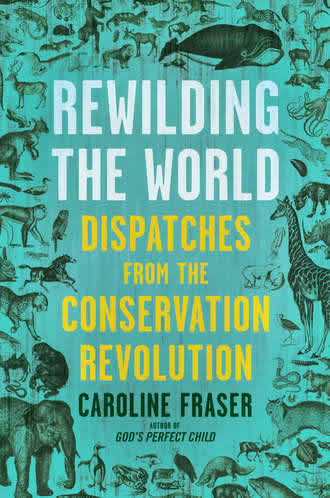In the fifth of our summer series of blogs about flowers on stage, Stephen Bottoms writes about the 'Breath of Life' in Susan Glaspell's play, The Verge.
Flowers are a bit queer. We think of them, habitually, as nature’s gift of colour and scent, yet they are also the most intensely ‘cultured’ of plants: we see them in ornately presented beds, or simply cut and arranged into bunches, bouquets. For most of us, particularly those of us in cities, flowers have typically been uprooted before we even see them: they have become human art and craft.
And yet, so often, we idealise them romantically, pretending that we are somehow apprehending their beauty in a virginal state of nature: ‘I wandered lonely as a Cloud,’ wrote Wordsworth in his
poem on daffodils, transforming himself from human into mere vapour, just in time for his revelatory apprehension, ‘all at once,’ of the yellow host dancing in the breeze.
‘Being natural is simply a pose,’ remarks Lord Henry Wootton at the outset of Oscar Wilde’s
The Picture of Dorian Gray, ‘and the most irritating pose I know.’ For Wilde, the artifice of human culture is inescapable, and that includes our relations with the so-called natural world: we live after the fall, in full self-consciousness, and simply ‘being’ – as opposed to performing – is only an option for the disingenuous.
No wonder, then, that the most renowned emblem of Wilde’s proto-queer community of decadents and aesthetes was the green carnation – the ‘little green flower’ that his
Salome promises to drop as a boon to the Young Syrian who admires her so. Carnations do not, of course, grow in green naturally - and for that matter they don’t grow red, white or yellow either, though all these colours have been cultivated as variations on (deviations from?) the bright pinkish-purple that nature provided. The appeal of such cultivars to Wilde was precisely their frank reminder of the
unnatural.
Something similar is apparent in the flower photography of
Robert Mapplethorpe, in the 1970s and ‘80s. Mapplethorpe gave us detailed, precision close-ups that capture the classical beauty of the floral, yet the pristine lighting and cool composition of these images make these blooms unavoidably cultured – sometimes so ‘cool’ as to appear almost deathly. Mapplethorpe’s fascination with the phallic properties of flowers, moreover – whether their stems or, more particularly, their pollen-bearing anthers and filaments – often seems to render them queerly anthropomorphic, particularly when juxtaposed on the wall with his human nudes.
It’s not only male artists who have apprehended this queerness in the floral, though. Take, for instance,
Susan Glaspell’s extraordinary play
The Verge, first staged in 1921 by New York’s
Provincetown Players.
The play’s heroine, Claire, is a troubled, radically feminist figure who expresses her attempts to break free of old forms, old assumptions, both through her unorthodox use of language – which oscillates between tortuous stuttering and flights of strange poetry – and through her obsessive work as an experimental botanist.
The various men in Claire’s life – Tom, Dick, and Harry – are tediously literal and natural(istic) by comparison, and they fear that her behaviour of late has become altogether too ‘queer.’ Glaspell’s 1920s usage of the word doesn’t appear to carry the same sexual connotations as it does today, but her inference is nonetheless towards something feared because it is alien, inexplicable, an implicit challenge to the presumed ‘norm.’
And the ultimate expression of Claire’s queerness lies in her cultivation of a tiny, fragile flower – which she has named, simply, ‘Breath of Life.’ This is a flower which, Glaspell’s stage directions tell us, ‘glows from within’ – but not with stereotypically feminine beauty. (“I’d rather be the steam rising from the manure than be a thing called beautiful!”, Claire asserts.)
This paradoxical bloom, though bred by a human, somehow radiates a strangeness that is beyond the frames of reference within which humans categorise and control the products of the natural world. “Let this be release,” Tom whispers in awe on seeing the flower, “This – breath of the uncaptured.”
Claire remains, however, unsatisfied, terrified that her creation (and her feminism?) will too swiftly become captured, accommodated, ‘naturalised’:
Breath of the uncaptured?
You are a novelty.
Out?
You have been brought in.
A thousand years from now, when you are but a form too long repeated,
Perhaps the madness that gave you life will burst again,
And from the prison that is you will leap pent queernesses
to make a form that hasn’t been –
We domesticate flowers at our own risk. They’re deviant little buggers – as queer as they are natural, as artificial as they are real. And we made them that way. Or, to misappropriate Wilde’s thoughts on art in his preface to
The Picture of Dorian Gray:
All (flowers are) at once surface and symbol.
Those who go beneath the surface do at their peril.
Those who read the symbol do so at their peril.
It is the spectator, and not life, that (a flower) really mirrors.
Stephen Bottoms is the Wole Soyinka Professor of Drama and Theatre Studies at the University of Leeds.
See also:
flowers on stage: the poppy,
flowers on stage: the daffodil,
flowers on stage: the lotus, and
flowers on stage: the lungwort
Coming up: the snake's head fritillary and kudzu
photo: Sue Kessler from the production of The Verge at the Performance Lab 115, New York, 2009
more ...


























